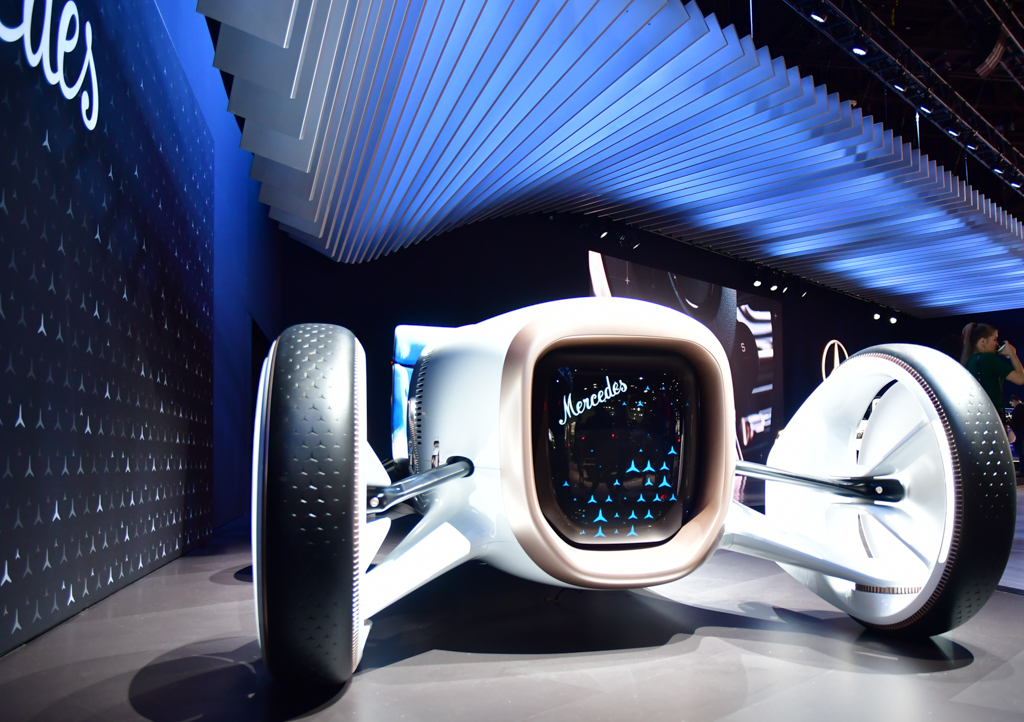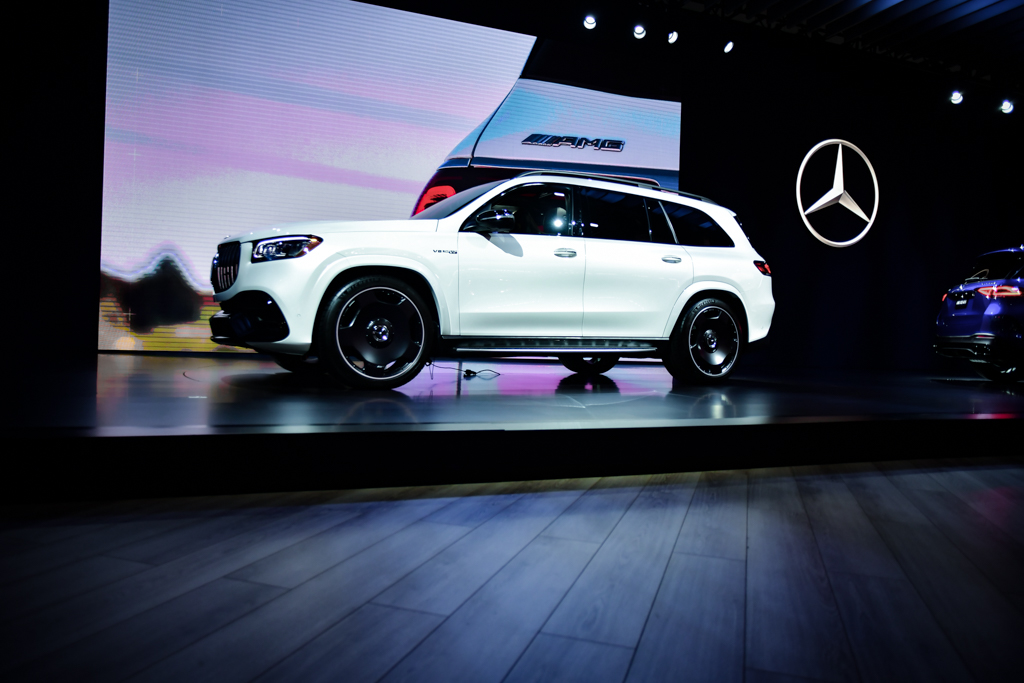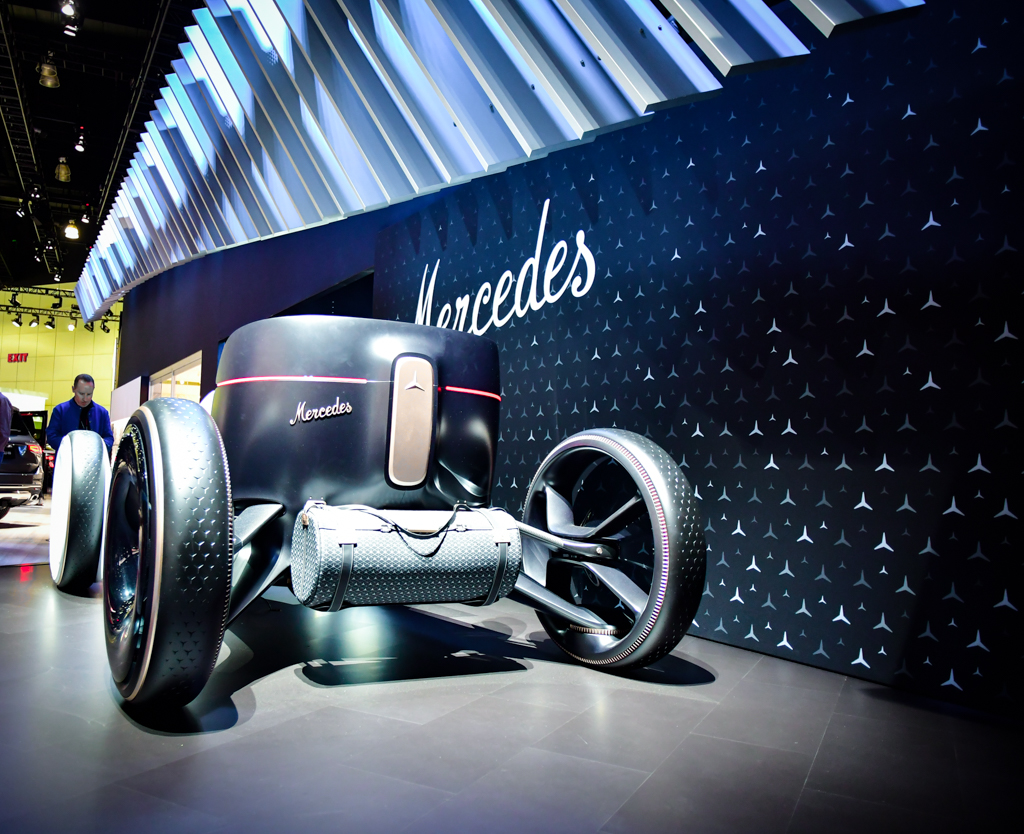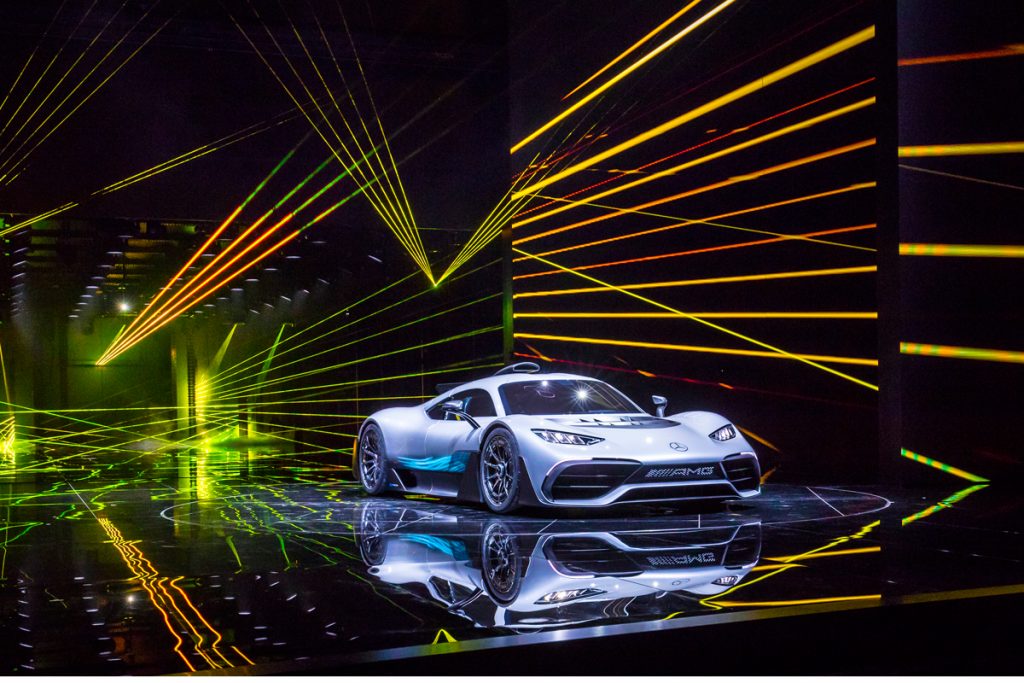LA Auto Show: How Mercedes-Benz’s Current Design Philosophy References the Retro
The carmaker looks back in order to look to the future

The Vision Mercedes Simplex concept will never be made into a production car. One can tell simply by looking at it: it’s a replication of a car that the world first saw in 1902. If Mercedes-Benz has no interest in traveling back in time, then why bother making a concept like this? Stefan Lamm, VP of advanced design in North America, explains that it began with an internal conversation between designers in several of Mercedes-Benz’s design centers—in California, Nice and Stuttgart (the carmaker’s headquarters).
When the original Daimler Simplex debuted it was for a hill-climb race near Nice, and designers wanted to pay homage to this part of the brand’s lineage (we got a sneak peak of it at the opening of their new design center there a few months ago). More than that, Lamm explains to us at the LA Auto Show, the goal was to look back in order to look forward; to really study at what was revolutionary 118 years ago and think about how to reboot those themes for the next revolution in car design: electrification. With this in mind, the Simplex concept was designed as an EV, but aims to evolve the original 1901 idea of what a car should look like, all while keeping true to what a Mercedes-Benz is now and will look like in the future.

As the name implies, the Simplex is refined—as was the original. In fact, that name was really a guiding principle of the effort. Lamm explains, “With electrification of our EQ brand, we’re starting to stretch what we can do and that’s really the idea of an exercise like this. So you start with the face of this car. There are no headlights and there’s no grille. That’s because the ‘grille’ has become a display.”

In terms of design language he says that the Simplex retains its large, upright front—just like the latest AMG SUVs, the 2020 GLS (above) and GLE (both of which are also on show in LA). While the Simplex’s grille might act only as a display, Lamm points out how the frame itself is “analog” rather than digital. “It’s hyper analog,” he says—to contrast with the digital content. “That contrast that we’re talking about is where we’re trying to combine the futuristic, looking forward, but also having the traditional aspects in there because we don’t want to be retro.” He analogizes this by noting many people wear classic timepieces, but still have access to a smartphone.

Lamm also underscores the playfulness of the star logo, which, at the time, didn’t have a round ring around it. On the Simplex, designers repeated the pared-down ornament and stamped it into the massively oversized tires and even into a Louis Vuitton duffel at the rear. The team wanted to use accents in rose gold because (thanks to the popularity of that hue in Apple products) it’s a color that’s become a visual shorthand for high-end technology.
A pure form should look great in a couple of years. Still modern, but not fixed in a moment.
Looking at the GLS and GLE as they relate to the Simplex’s form language, Lamm says designers struggle to do create simplicity. “Taking a line off a car is more difficult than to add one,” he says, but explains that’s why the GLS and GLE get as few horizontal creases as possible—just one at the shoulder and one near the door sill. “If your design is too busy, it’s not timeless. A pure form should look great in a couple of years. Still modern, but not fixed in a moment.”

“Like that Simplex… Push the wheels to the corners and you don’t need to make visual tricks,” he says, outlining how a concept like the Simplex informs the carmaker’s current approach. For instance, the upright grille of the new GLS is a reference to what was started with the original Simplex. Even the oversized pie-plate wheels on the GLS—similar to the massive rims of the Simplex concept—are a symbol of power and performance.
We’d like to see Mercedes return to a smaller star badge rather than the massive talisman on their latest AMG products, and perhaps the Simplex concept’s reductionist twinkle points to a new direction for the brand.
Images by Michael Frank












